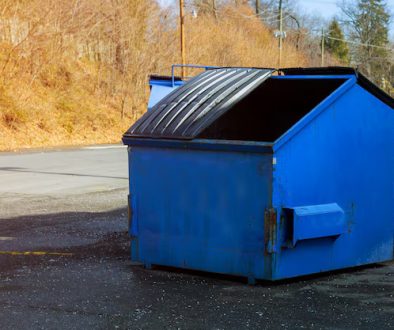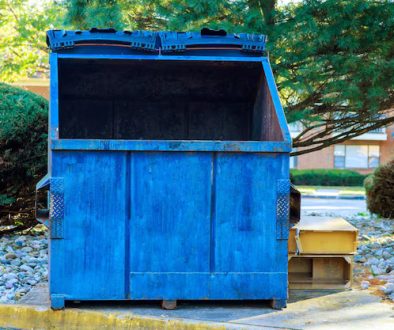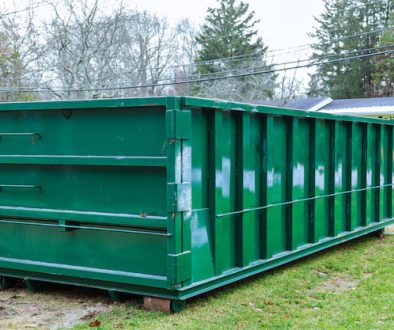Choosing the right skip size for your project needs is a crucial aspect of efficient and cost-effective waste management. Whether it’s a home renovation, landscaping endeavour, or a construction project, the correct skip size plays a vital role in streamlining waste disposal, minimising environmental impact, and contributing to a seamless and successful project execution. Enviro Skip Hire, a family-run skip hire and aggregate company servicing Staffordshire, offers a wide range of skip sizes and provides expert advice to help you determine the most suitable skip for your unique requirements.
In this informative guide, we will outline the various aspects to consider when selecting the perfect skip size for your project, such as waste volume, accessibility, and budget constraints. We will also discuss the importance of factoring in recycling and efficient rubbish segregation when making your decision. Furthermore, we will showcase Enviro Skip Hire’s varied skip options, highlighting their dedication to customer satisfaction and environmental responsibility.
Assessing Your Project’s Waste Volume and Type
The first step towards selecting the ideal skip size is to evaluate the amount and type of waste your project is likely to generate. Consider the following factors when estimating waste volume and type:
- Nature of the Project: Different projects produce varying amounts and types of waste. For example, a small home renovation might generate less waste than a large construction project, while landscaping jobs are likely to produce green waste.
- Materials and Packaging: Consider the materials used in your project, along with the packaging they come in, as these will contribute to the overall waste volume. Additionally, be aware of any materials that require special disposal or recycling processes, such as hazardous or electrical items.
- Recycling Opportunities: Assess the recyclability of the waste materials produced by your project. By efficiently segregating recyclable materials, you can contribute to a more sustainable waste management approach and potentially reduce your skip size requirements.
Understanding Skip Sizes and Capacities
Once you have an accurate estimation of your project’s waste volume and type, explore the various skip sizes and capacities available to determine the most appropriate option for your needs. Enviro Skip Hire offers a wide range of skip sizes to cater to diverse project requirements:
- Mini Skips (2-3 yards): Ideal for smaller projects, such as minor home renovations and gardening jobs, these compact skips can accommodate approximately 20-30 bin bags of rubbish.
- Midi Skips (4-5 yards): Suitable for medium-sized projects, such as bathroom or kitchen renovations, these skips can hold around 40-50 bin bags of waste.
- Large Skips (6-8 yards): Perfect for larger-scale projects, like home extensions or office clearances, these spacious skips can accommodate approximately 60-80 bin bags of rubbish.
- Maxi Skips (10-16 yards): Designed for substantial construction and demolition projects, these skips can hold roughly 100-160 bin bags of waste, facilitating efficient waste management for high-volume jobs.
Considering Accessibility and Location Constraints
Another essential aspect of choosing the right skip size is taking into account the accessibility and location constraints of your project site. Keep the following factors in mind when making your decision:
- Space Availability: Ensure that there is sufficient space on your property or construction site to accommodate not only the skip itself but also the delivery and collection vehicles involved in the skip hire process.
- Permit Requirements: If you need to place the skip on a public road or area, you might require a permit from your local council. Be sure to factor in any size limitations or restrictions when selecting your skip size.
- Accessibility: Consider any potential obstacles or challenges surrounding the skip hire process, such as narrow roads, tight corners, or other site limitations that could impact the delivery and collection of your chosen skip.
Budget and Cost Efficiency
While it may be tempting to choose a larger skip to accommodate potential increases in waste volume or unforeseen project changes, it is essential to strike a balance between waste management efficiency and cost control. Consider the following guidelines when selecting a skip size with budget efficiency in mind:
- Avoid Overloading: It is crucial not to overload your chosen skip, as this can result in additional costs, safety risks, and potential breaches of waste disposal regulations. Select a skip size that comfortably accommodates your estimated waste volume without overfilling.
- Plan Efficient Waste Segregation: Effective waste segregation and recycling can not only contribute to a more environmentally friendly project but also reduce your skip size requirements and associated costs. Implement proper waste segregation and recycling strategies to maximise cost efficiency.
- Calculate Waste Volume Accurately: To avoid underestimating or overestimating waste volume, invest time and effort in accurately calculating the size of the skip required for your project. Seek expert advice from providers like Enviro Skip Hire to ensure a precise estimation.
Conclusion
Selecting the right skip size for your project is critical for ensuring efficient waste disposal, minimising environmental impact, and managing costs effectively. By considering factors such as waste volume, accessibility constraints, and cost efficiency, you can make an informed decision regarding the most appropriate skip for your project needs.
Partner with Enviro Skip Hire to benefit from their expert advice and comprehensive range of skips tailored to accommodate diverse waste management requirements and support sustainable, eco-friendly practices. Contact Enviro Skip Hire today to discuss your project needs and explore our skip hire in Cheshire, enabling a seamless waste management process that contributes to a successful and environmentally responsible outcome.




